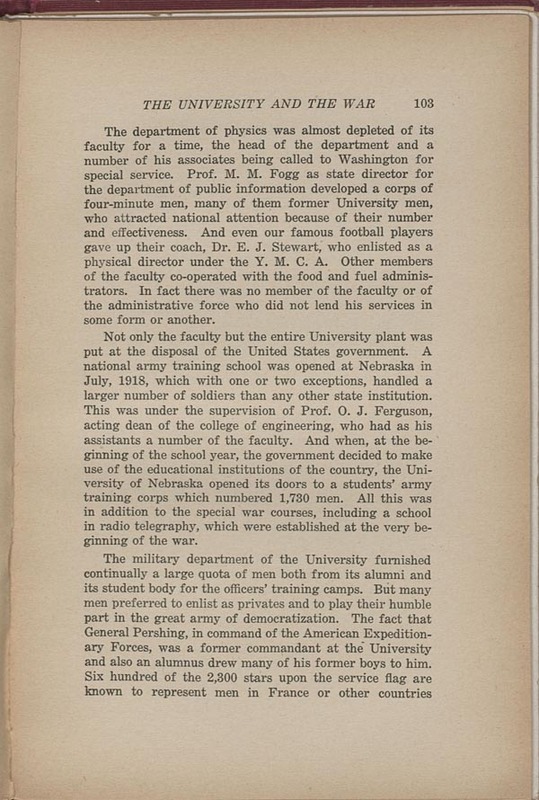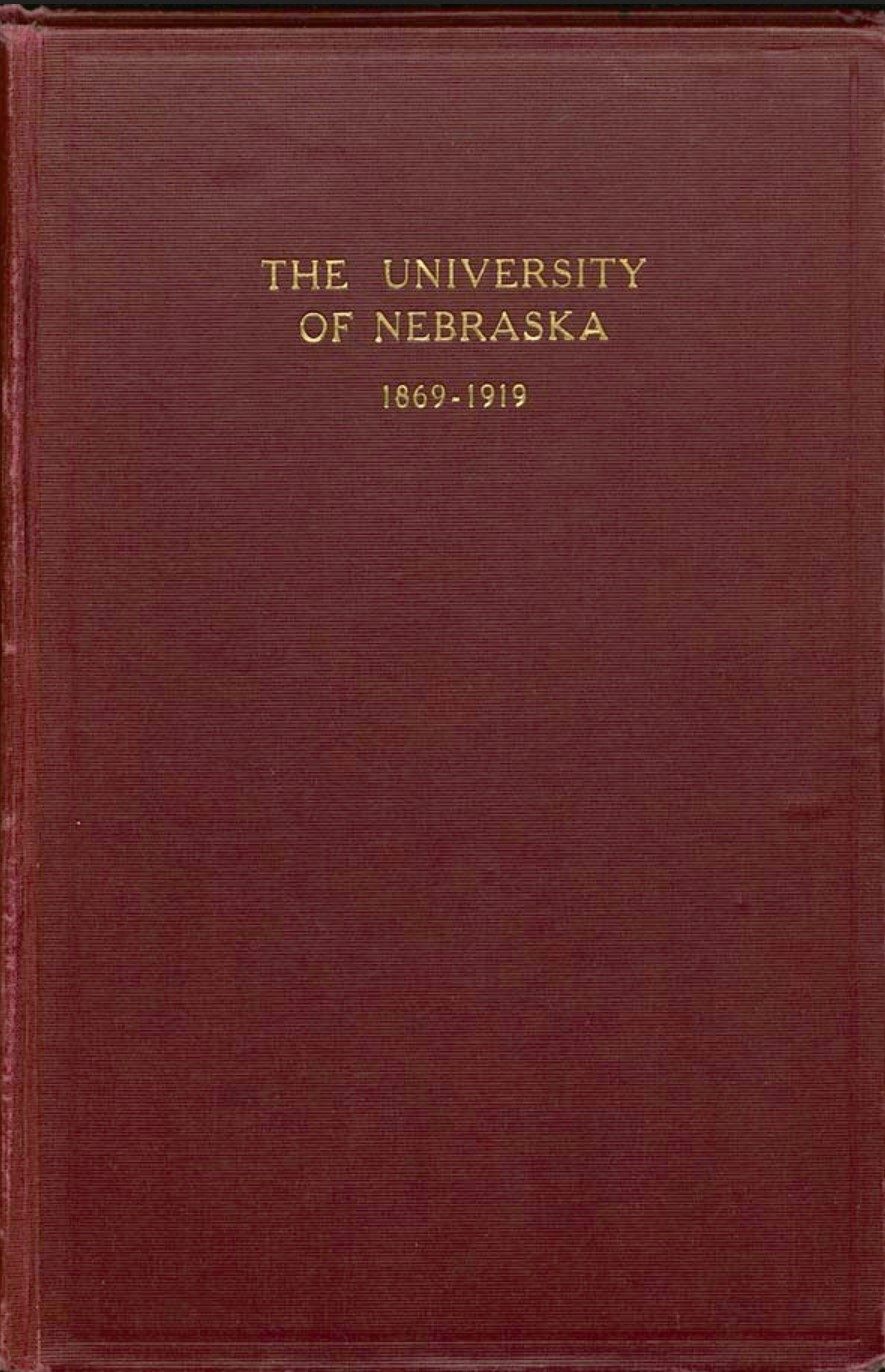107
Item
-
Title
-
107
-
Description
-
Semi-Centennial Anniversary Book: The University of Nebraska, 1869-1919
-
Transcription
-
The department of physics was almost depleted of its faculty for a time, the head a the department and a number of his associates being called to Washington for special service. Prof. M. M. Fogg as state director for the department of public information developed a corps of four-minute men, many of them former University men, who attracted national attention because of their number and effectiveness. And even our famous football players gave up their coach, Dr. E. J. Stewart, who enlisted as a physical director under the Y. M. C. A. Other members of the faculty co-operated with the food and fuel administrators. In fact there was no member of the faculty or of the administrative force who did not lend his services in some form or another.
Not only the faculty but the entire University plant was put at the disposal of the United States government. A national army training school was opened at Nebraska in July, 1918, which with one or two exceptions, handled a larger number of soldiers than any other state institution. This was under the supervision of Prof. O. J. Ferguson, acting dean of the college of engineering, who had as his assistants a number of the faculty. And when, at the beginning of the school year, the government decided to make use of the educational institutions of the country, the University of Nebraska opened its doors to a student's army training corps which numbered 1,730 men. All this was in addition to the special war courses, including a school in radio telegraphy, which were established at the very beginning of the war.
The military department of the University furnished continually a large quota of men both from its alumni and its student body for the officers' training camps. But many men preferred to enlist as privates and to play their humble part in the great army of democratization. The fact that General Pershing, in command of the American Expeditionary Forces, was a former commandant at the University and also an alumnus drew many of his former boys to him. Six hundred of the 2,300 stars upon the service flag are known to represent men in France or other countries
-
Rights
-
To inquire about usage, please contact Archives & Special Collections, University of Nebraska-Lincoln Libraries. These images are for educational use only. Not all images are available for publication.



